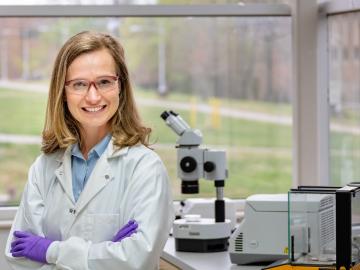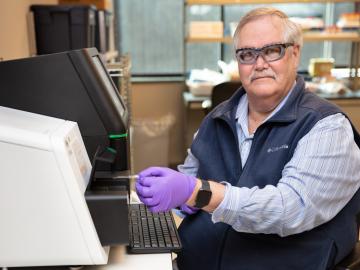
Filter News
Area of Research
- (-) Biology and Environment (41)
- (-) Fusion Energy (7)
- Advanced Manufacturing (13)
- Biological Systems (1)
- Building Technologies (2)
- Clean Energy (129)
- Climate and Environmental Systems (2)
- Computational Biology (1)
- Computational Engineering (3)
- Computer Science (12)
- Electricity and Smart Grid (1)
- Fusion and Fission (14)
- Isotopes (12)
- Materials (70)
- Materials for Computing (18)
- Mathematics (1)
- National Security (12)
- Neutron Science (39)
- Nuclear Science and Technology (12)
- Quantum information Science (6)
- Sensors and Controls (1)
- Supercomputing (52)
- Transportation Systems (2)
News Topics
- 3-D Printing/Advanced Manufacturing (3)
- Advanced Reactors (4)
- Artificial Intelligence (1)
- Big Data (1)
- Bioenergy (11)
- Biology (18)
- Biomedical (4)
- Biotechnology (4)
- Chemical Sciences (1)
- Clean Water (5)
- Climate Change (5)
- Composites (1)
- Computer Science (3)
- Decarbonization (1)
- Energy Storage (1)
- Environment (25)
- Exascale Computing (1)
- Fusion (6)
- High-Performance Computing (5)
- Materials (3)
- Materials Science (3)
- Mercury (3)
- Microscopy (1)
- Nanotechnology (1)
- Neutron Science (1)
- Nuclear Energy (5)
- Polymers (1)
- Security (1)
- Summit (2)
- Sustainable Energy (9)
Media Contacts

The U.S. Department of Energy announced funding for 12 projects with private industry to enable collaboration with DOE national laboratories on overcoming challenges in fusion energy development.

In a recent study, researchers at Oak Ridge National Laboratory performed experiments in a prototype fusion reactor materials testing facility to develop a method that uses microwaves to raise the plasma’s temperature closer to the extreme values

As a computational hydrologist at Oak Ridge National Laboratory, Ethan Coon combines his talent for math with his love of coding to solve big science questions about water quality, water availability for energy production, climate change, and the

Using additive manufacturing, scientists experimenting with tungsten at Oak Ridge National Laboratory hope to unlock new potential of the high-performance heat-transferring material used to protect components from the plasma inside a fusion reactor. Fusion requires hydrogen isotopes to reach millions of degrees.
A team of scientists led by Oak Ridge National Laboratory have discovered the specific gene that controls an important symbiotic relationship between plants and soil fungi, and successfully facilitated the symbiosis in a plant that

Amber McBride is using her expertise in nanotechnology, drug delivery, and disease models to research fundamental challenges in human health in the ORNL Biosciences Division.

Scientists have tested a novel heat-shielding graphite foam, originally created at Oak Ridge National Laboratory, at Germany’s Wendelstein 7-X stellarator with promising results for use in plasma-facing components of fusion reactors.



